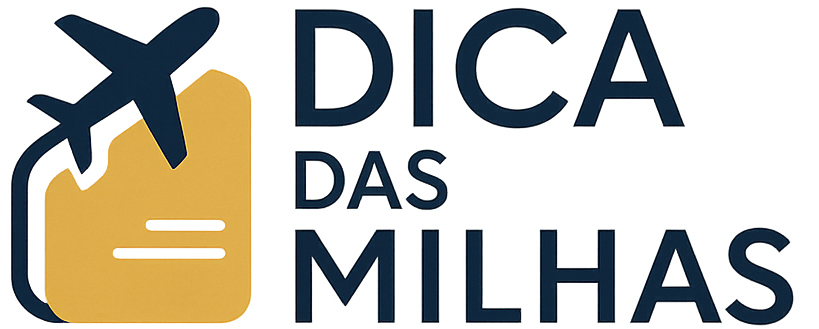When it comes to maximizing your travel rewards, one skill stands above all others: knowing how to calculate the value of a point or mile. Without this knowledge, you could waste valuable rewards on poor redemptions or miss out on amazing travel opportunities.
Calculating value is not complicated, but it requires a methodical approach and a little bit of discipline.
This guide will teach you exactly how to determine the real worth of your points and miles — and how to use that information to make better decisions every time you redeem.
Why It’s Critical to Know the Value of Your Points and Miles
Many travelers focus only on earning miles and points — through flights, credit cards, shopping portals, and more — but don’t spend enough time learning how to spend them wisely.
Without knowing the value:
- You might redeem 30,000 miles for a $150 flight (poor value).
- You might miss an opportunity to book a $1,500 business class seat for the same number of miles (amazing value).
Understanding the true value empowers you to:
- Make smarter redemption choices
- Prioritize better deals
- Stretch your rewards to travel more frequently and luxuriously
The Basic Formula for Calculating Value
The fundamental way to calculate the value of a point or mile is:
Value per point/mile = (Cash price – Taxes and fees) / Number of points or miles required
This tells you exactly how much each point or mile is saving you in real money.
Example 1: Calculating Mile Value for an Award Flight
Suppose you want to book a flight:
- Cash price: $500
- Taxes and fees: $50
- Miles required: 25,000 miles
Using the formula:
(500 – 50) / 25,000 = 450 / 25,000 = $0.018 per mile (1.8 cents)
This is a good redemption, especially for economy flights.
Example 2: Calculating Point Value for a Hotel Stay
Suppose you book a hotel room:
- Cash price: $400 per night
- Taxes and fees: $30
- Points required: 30,000 points
Calculation:
(400 – 30) / 30,000 = 370 / 30,000 = $0.0123 per point (1.23 cents)
Again, a reasonable redemption — hotel points often have lower per-point values compared to airline miles.
Benchmarks for Good Value
Understanding general benchmarks helps you quickly recognize good (and bad) redemptions:
| Program | Average Value | Good Value Target |
|---|---|---|
| Chase Ultimate Rewards | 2.0 cents | 2.0–2.2 cents |
| Amex Membership Rewards | 1.8 cents | 2.0+ cents |
| United MileagePlus | 1.3 cents | 1.4+ cents |
| Delta SkyMiles | 1.2 cents | 1.3+ cents |
| Marriott Bonvoy Points | 0.7 cents | 0.8+ cents |
| Hilton Honors Points | 0.5 cents | 0.6+ cents |
✅ Always aim for redemptions that meet or exceed the good value target.
Important Factors That Affect the Value of Points and Miles
Several variables influence the real-world value of your rewards:
1. Class of Service
- Business/First Class flights usually provide higher cents-per-mile value than economy.
- Redeeming miles for luxury seats maximizes value.
Example:
A business class flight costing $5,000 for 100,000 miles = 4.9 cents per mile.
2. Route and Destination
- Long-haul, international flights often provide better mile value than short-haul domestic flights.
- Highly competitive routes (like New York to London) may offer more availability.
3. Program Rules and Fees
Some programs impose:
- High taxes and surcharges (British Airways, LATAM Pass)
- Blackout dates and capacity controls (Delta, Smiles)
- Higher redemption rates during peak travel
Always account for these in your calculations.
4. Transfer Bonuses
Banks often offer transfer bonuses to airline or hotel programs, increasing effective point value.
Example:
- 50,000 Amex points transferred to British Airways during a 40% bonus = 70,000 Avios
- Higher resulting value per point when redeemed for flights
5. Promotions and Flash Sales
Airlines and hotels sometimes discount award redemptions, temporarily increasing the value of your points.
Example:
- United Airlines may offer 30% off award flights to Europe.
- Hilton may offer fifth night free for award stays.
Tools That Help Calculate Point and Mile Value
You don’t need to do all calculations manually.
Useful tools include:
- AwardWallet: Tracks your balances and expiration dates.
- The Points Guy (TPG) Monthly Valuations: Offers average point/mile valuations.
- Flight Award Calculators: Many airlines offer online award pricing calculators.
- Spreadsheet Tracking: Create your own Excel sheet to log redemption data.
Real-Life Example: Two Different Redemptions
Let’s say you have 50,000 American Airlines AAdvantage miles.
You have two options:
Option 1:
- Flight from Miami to Orlando
- Cash price: $200
- Taxes: $20
- Miles required: 25,000
Value:
(200 – 20) / 25,000 = 180 / 25,000 = 0.72 cents per mile
Option 2:
- Business class flight Miami to Buenos Aires
- Cash price: $3,000
- Taxes: $100
- Miles required: 50,000
Value:
(3000 – 100) / 50,000 = 2900 / 50,000 = 5.8 cents per mile
Clearly, Option 2 offers much better value.
Common Mistakes When Calculating Value
Avoid these traps:
- Ignoring taxes and fees: Always subtract them from the cash price.
- Focusing only on cents per mile: Convenience, flexibility, and travel goals also matter.
- Assuming static valuations: Program devaluations happen — valuations can change over time.
- Transferring points without checking award space: Always verify availability before moving points permanently.
How to Improve Your Redemption Values
To consistently get the best value:
- Redeem points for long-haul or premium flights.
- Use miles for high-cash-cost travel, not cheap domestic tickets.
- Book early or during flash promotions.
- Take advantage of transfer bonuses.
- Monitor award availability closely.
Final Thoughts: Make Every Point and Mile Work Harder
Mastering how to calculate the value of a point or mile turns you from a casual traveler into a strategic traveler.
Always:
- Compare miles or points required to the cash alternative.
- Use the simple formula to determine cents per mile or point.
- Act smartly based on your goals, not just the numbers.
Points and miles are powerful — but only if you use them wisely.
Learning how to properly calculate value ensures that every reward you earn gets you closer to unforgettable adventures.
Elaine A. da Silva is a Brazilian travel and finance enthusiast, best known as the creator of the blog Dica das Milhas. With a strong background in personal finance and a passion for exploring smart travel strategies, she specializes in simplifying the world of airline miles and travel rewards for everyday people. Through her blog, Elaine shares practical tips, insider knowledge, and step-by-step guides to help readers save money and travel more efficiently using loyalty programs and credit card points.







